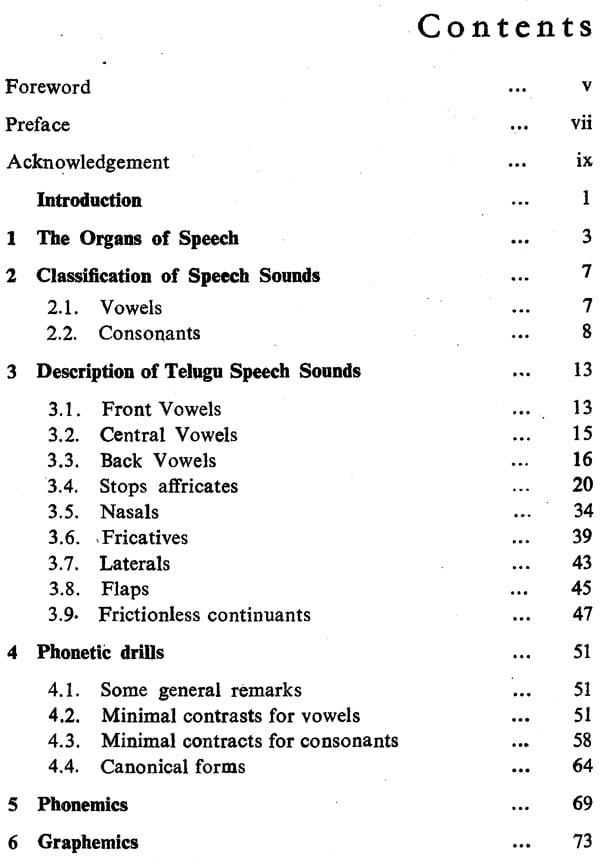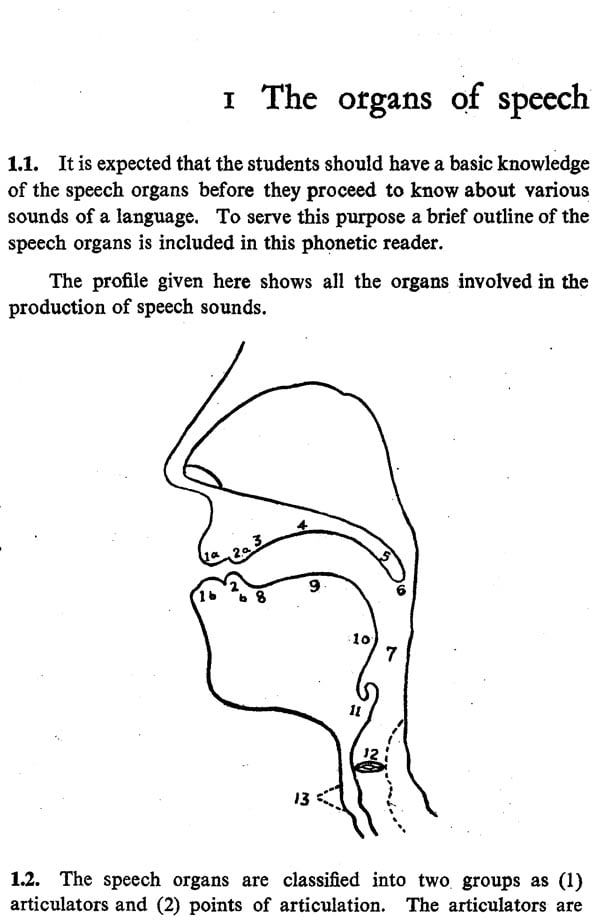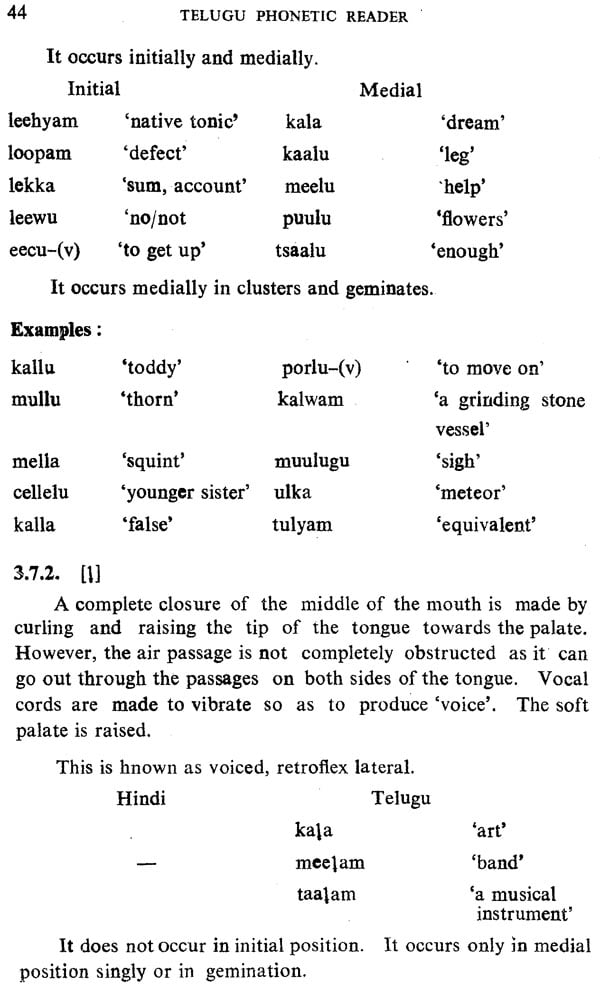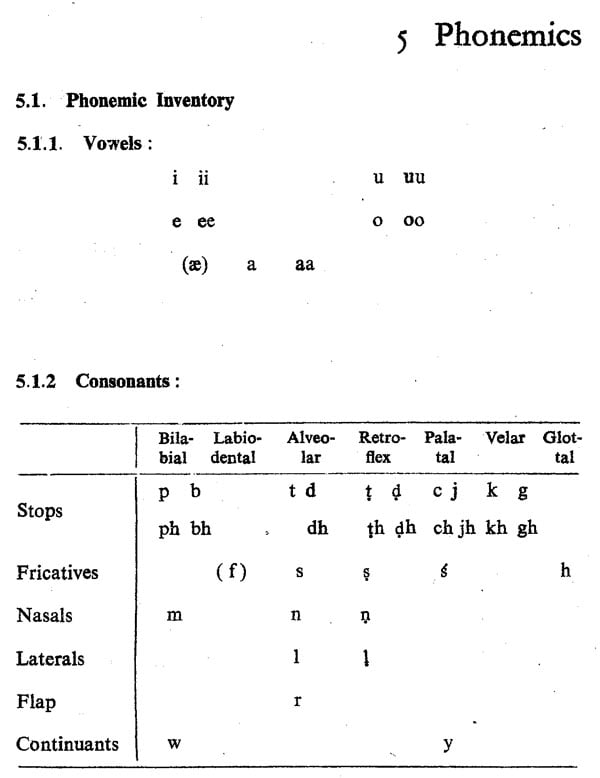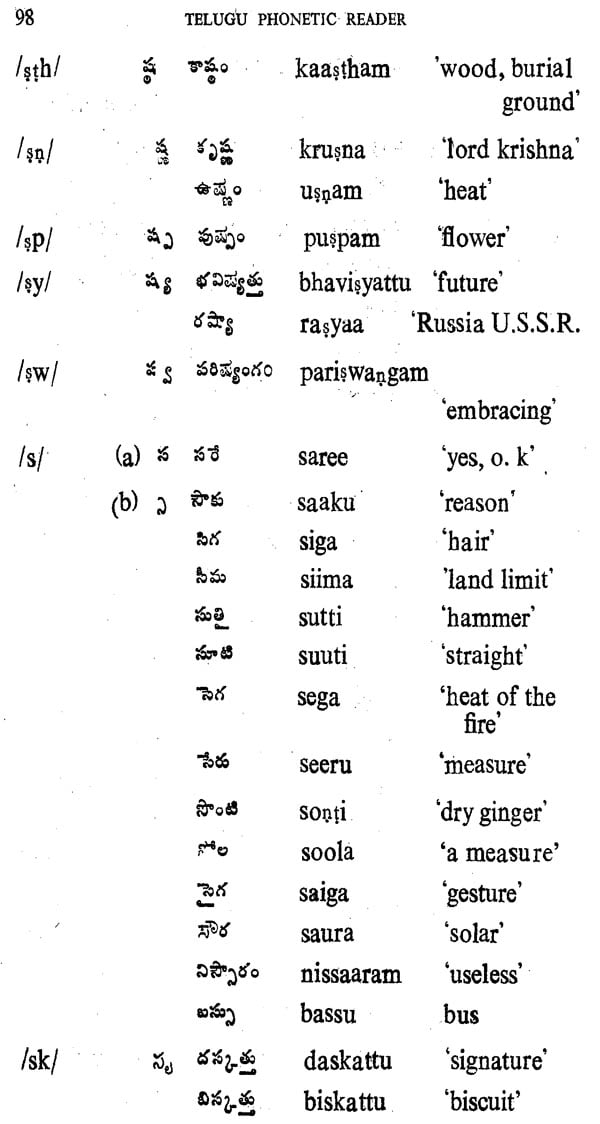
Telugu Phonetic Reader
Book Specification
| Item Code: | NAW159 |
| Author: | J. Venkateswara Sastry |
| Publisher: | Central Institute Of Indian Languages, Mysore |
| Language: | English |
| Edition: | 2000 |
| ISBN: | 8173420734 |
| Pages: | 108 |
| Cover: | PAPERBACK |
| Other Details | 8.50 X 5.50 inch |
| Weight | 130 gm |
Book Description
The Institute has seven Regional Language Centres to impart 10 months intensive training in modern Indian languages to the teachers deputed by different State Governments and Union Territories. The Institute publishes need based text and supplementary materials for teaching these languages.
The Central Institute of Indian Languages has published Phonetic Readers in various Indian languages with a view to presenting the range of Phonetic variations prevalent in India and demonstrating the closeness of languages on the basis of Phonetic patterns. These Readers are biased towards learning the sound systems of languages. These Readers are useful to both scholars who are interested in Phonetic studies and to second/foreign language learners of these languages.
The present Phonetic Reader is a reprint of the previous version published several years back. I trust the scholars and second language learners will find it useful.
The phonetic readers in this series have been designed with the above points in view. They are mainly intended to meet the needs of teachers who receive training in an Indian language other than their mother-tongue at the Regional Language Centres of the Central Institute of Indian Languages. These teachers are expected not only to learn the languages in question but also be able to teach it to their students when they return home.
Each reader consists of a brief exposition about the organs of speech and their functions. It also introduces some technical terms. Then each speech sound is described in detail giving the movements of the vocal organs. Each description is rounded off by the technical term for that sound. Certain sounds which may prove difficult to persons with certain language backgrounds are emphasised. The readers also contain drills for practice. A brief phonemic statement which meaningfully groups the sounds described in the preceding sections is also appended. A statement about the correspondences between the phonemes of the language studied and the letters used in the conventional orthography comes at the end.
These readers have been tried out on two batches of teacher-trainees and have been revised in the light of experience that has been gained. It may be too much to claim that they are perfect. There are lacunae still to be filled up. The most conspicuous of these is the lack of any information on intonation. Suggestions for improvement are welcome and will be incorporated in the subsequent editions.
Though it is true that certain features of pronunciation can only be learnt with the aid of a teacher, the utility of such readers cannot be underestimated. It is hoped that these readers will be useful to even persons other than those for whom they are specifically intended.
Though this is not an exhaustive study of. Telugu sounds, an attempt has been made to describe all the frequent sounds of the language. All the sounds are described in terms of their articulation and distribution. The distribution is quite simple and knowledge of technical terms is not essential to understand it.
The present work is mainly, intended for native speakers of Indo-Aryan languages like Bengali, Gujarati, Hindi and Oriya. All of them are expected to know Hindi. Hence the author has included a special feature by giving examples for each sound in Hindi also besides Telugu. This will enable the Hindi knowing people to know the exact equivalent of Telugu sound in Hindi. The areas of difficulty are spotted-out and necessary drills are suggested.
0.2 The sounds in this phonetic reader are given according to the convention of phonetics. The present work is divided into six chapters. The first chapter deals with organs of speech. The second chapter deals with classification of speech sounds. The third chapter deals with the actual ' reader' where the description and distribution of vowels and consonants are given in simple non-technical terms. The description is on the following lines.
1. The movements of the speech organ. 2. Phonetic description of the sound.
3. Examples in Hindi and Telugu (in all positions).
4. Statement about the distribution of the sound in Telugu.
5. Examples in Telugu in Initial, Medial and Final positions.
6. Incise of consonants examples of geminates and clusters in all positions.
7. Any additional note if considered necessary for the benefit of the students.
The fourth chapter consists of phonetic drills, which are meant for class-room use. Minimal pairs are given here, which if practiced well, will make the student perfect in recognizing the sounds. At the end of the drills few more words are given which fall under different canonical shapes. The fifth chapter presents a brief outline of the phonemic analysis of Telugu. The sixth chapter is exclusively meant for graphemes of Telugu, where a brief study of graphemes and their allograph is made. It also deals with phoneme-grapheme correspondences in detail.
Book's Contents and Sample Pages
